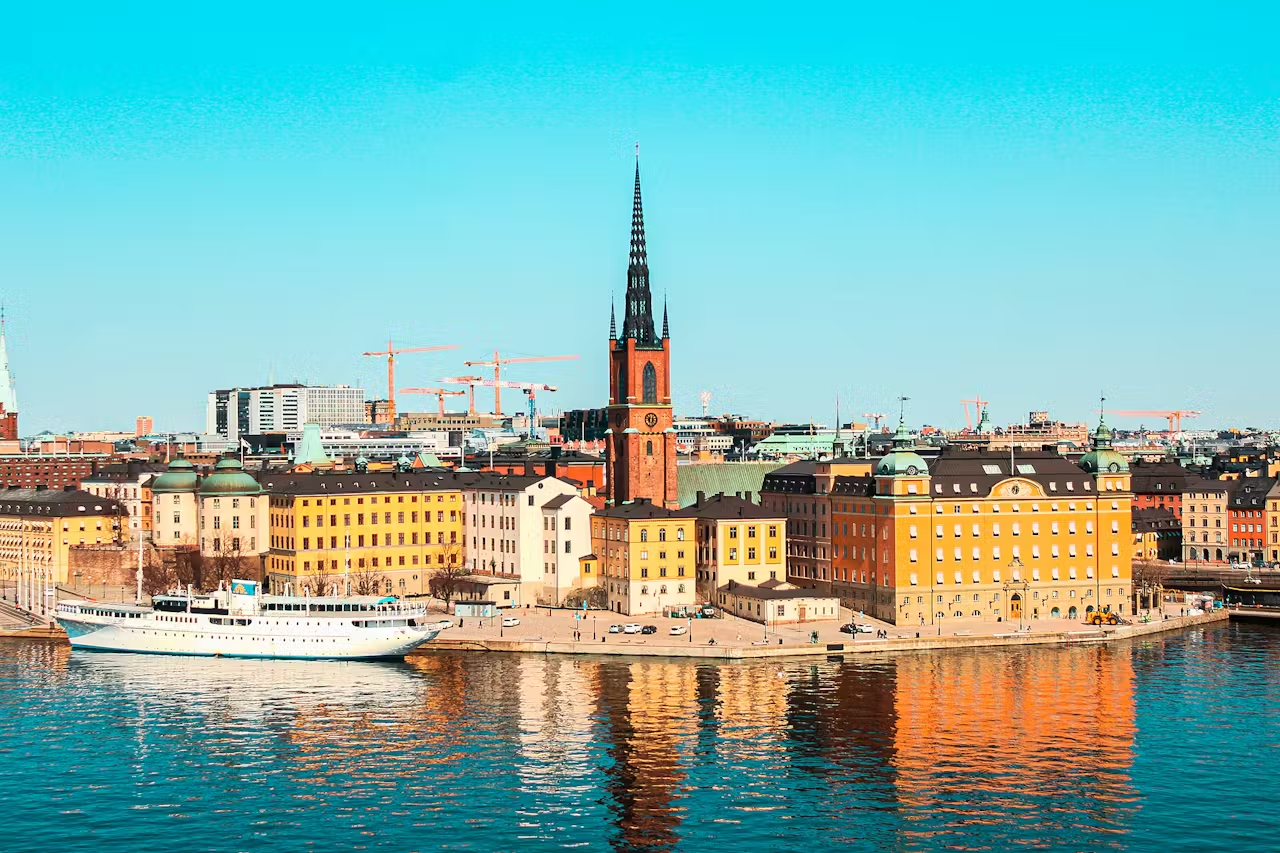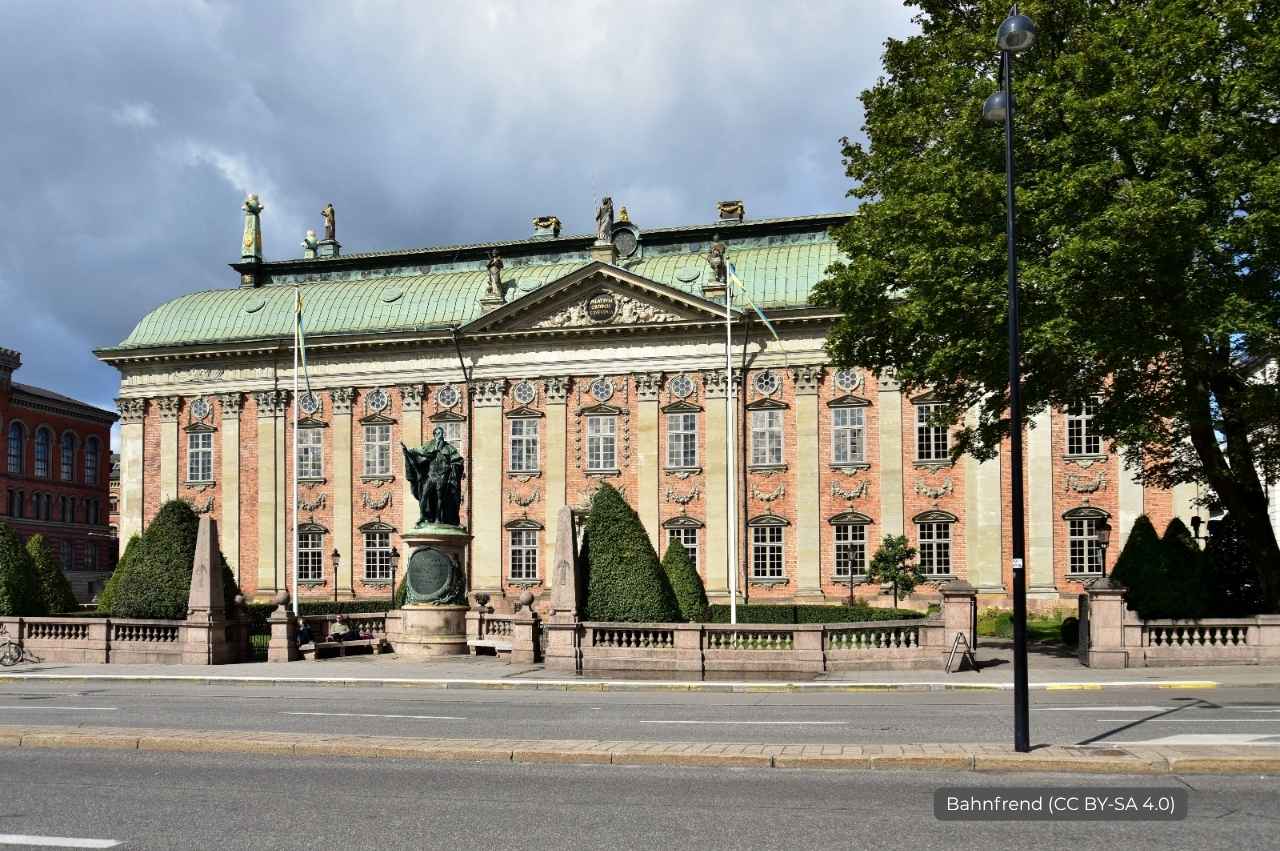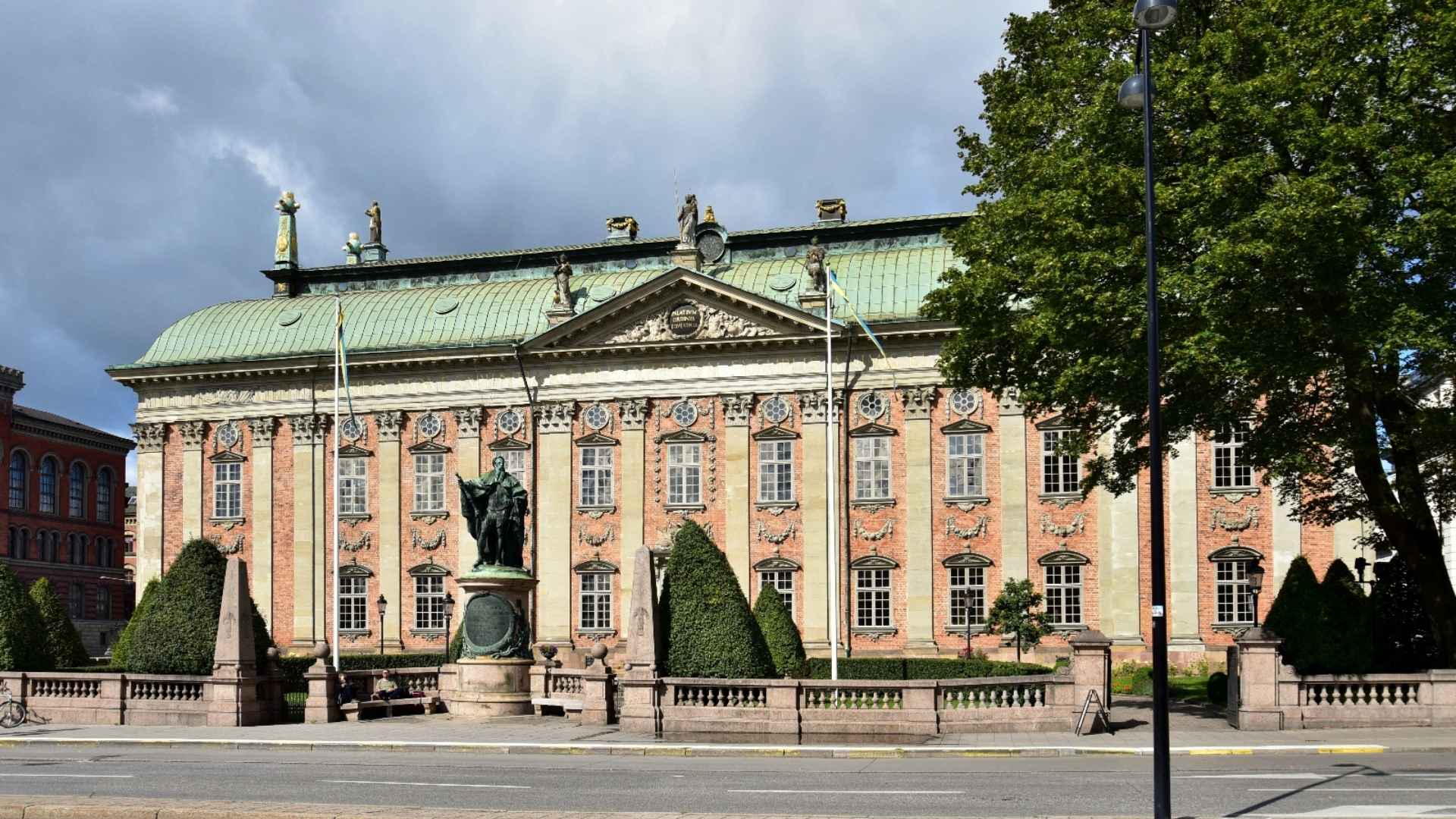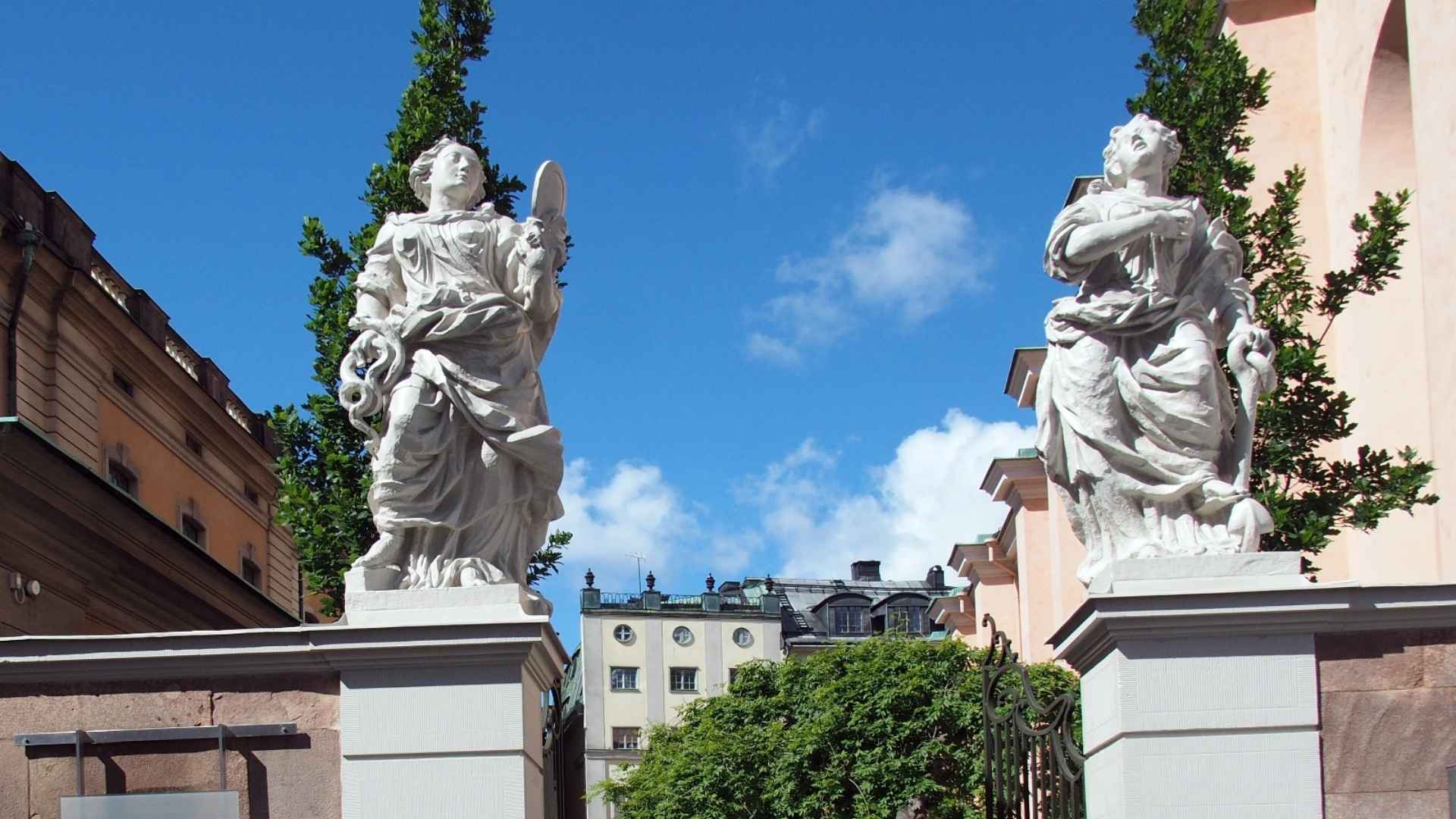TLDR
Riddarhuset (House of Nobility) is a stunning baroque building from the 1640s where Sweden's nobility still meets. You can visit on guided tours to see the Great Hall with 2,300 noble coats of arms.
The House of Nobility doesn't look like much from the street if you're rushing past. But stop for a moment and you'll notice the proportions are perfect, the details are exquisite, and there's something quietly impressive about this building.
After visiting several times, I've learned that Riddarhuset rewards those who appreciate institutional history and baroque architecture more than those seeking royal glamour.
This is where Sweden's noble families have gathered for over 350 years, and it's one of Stockholm's most underrated historical sites.
What is the story behind House of Nobility?

The House of Nobility was built between 1641 and 1674 as a meeting place for Sweden's nobility during the country's era as a major European power. Architect Simon de la Vallée designed the baroque building, though he died during construction and his son Jean took over.
The nobility needed a place to organize and meet when summoned by the king to the Riksdag (parliament). The building served this purpose throughout Sweden's Age of Greatness and beyond.
Today it remains a private organization representing noble families, though its political power disappeared with democratic reforms. The institution maintains genealogical records and preserves noble traditions while the building itself stands as an architectural masterpiece.
What is the House of Nobility in Stockholm?
The House of Nobility is both a baroque palace and a functioning institution representing Sweden's nobility. The organization maintains records of all Swedish noble families and their genealogies, dating back centuries.
The building houses the Knights' Hall (Riddarsalen), an impressive baroque chamber with 2,300 noble coats of arms covering the walls and ceiling. Nobility members still meet here occasionally, though the organization's role is ceremonial and cultural rather than political. It's privately owned by the nobility association, not a state museum.
Guided tours let visitors see the Knights' Hall and learn about Swedish noble history. The building is considered one of Europe's finest baroque structures.
Can you visit the House of Nobility?
Yes, you can visit the House of Nobility, but only on guided tours. The building is open limited hours, typically afternoons from Monday to Friday during summer, and less frequently in winter.
Tours are offered in Swedish and English, lasting about 30 minutes. Entry costs around 80-100 SEK for adults. You must join a scheduled tour since you can't wander independently. The Knights' Hall is the main attraction, showcasing baroque decoration and the genealogical displays. Photography is usually allowed but check current rules.
Book ahead during peak summer season since tour sizes are limited. The building closes for private events occasionally, so verify hours before visiting.
What can you see inside?
The Knights' Hall dominates the visitor experience with its impressive baroque interior. The walls and vaulted ceiling display 2,300 coats of arms representing Swedish noble families, both extinct and still existing.
The sculptures of Swedish national heroes line the room. Large portraits of monarchs hang on the walls. The genealogical records and archives aren't on public display but the heraldic artwork tells visual stories of Swedish history. The baroque architecture features perfect proportions and elegant details throughout.
Guided tours explain the nobility system, the building's history, and point out significant family crests. The experience is educational and architectural rather than lavish in the royal palace sense.
When is the best time to visit?
Summer months (June-August) offer the most reliable opening hours with daily afternoon tours. However, this is also peak tourist season in Stockholm. May and September provide good visiting conditions with fewer crowds and decent weather. Winter months have very limited hours and the building may close for extended periods.
Weekday afternoons work best since that's when tours run most consistently. Late morning visits let you combine the House of Nobility with other Riddarholmen attractions before they close. Thursday through Monday typically have better availability than Tuesday-Wednesday.
Check the official website for current schedules since hours vary significantly by season and the building closes for private events.
How much does it cost to visit?

Adult admission costs approximately 80-100 SEK (around $8-10), which is reasonable for Stockholm standards. Students and seniors usually get discounts. Children under a certain age may enter free.
Payment is typically cash or card at the entrance. The price includes the guided tour, which is the only way to see the interior. Photography permission is included in the ticket price.
Compared to Stockholm's major museums charging 150-200 SEK, the House of Nobility offers good value for architecture and history enthusiasts. However, the limited opening hours and tour-only access mean you need to plan carefully to make the visit happen.
Does Sweden still have nobility?
Yes, Sweden still has nobility, though their status is purely ceremonial and genealogical. The nobility lost all political privileges in 1866 when parliament was reformed. Today, noble titles exist but confer no legal benefits, tax advantages, or political rights. Approximately 600 noble families remain, down from historical highs.
The House of Nobility continues as a private organization maintaining genealogical records and organizing occasional meetings. Noble families use their titles socially but they're regular citizens legally. No new noble families can be created since 1974. The system is unusual in Europe where many countries abolished nobility completely. Swedish nobility represents historical continuity without actual aristocratic privilege.
Who lives in Stockholm Royal Palace now?
The Swedish Royal Family uses the Royal Palace for official functions but doesn't live there. King Carl XVI Gustaf and Queen Silvia actually reside at Drottningholm Palace, about 10 km west of Stockholm. Crown Princess Victoria and Prince Daniel live at Haga Palace north of the city.
The Stockholm Royal Palace serves as the official workplace where the king receives dignitaries, holds ceremonies, and conducts official business. Parts of the palace are open to tourists as museums showing royal apartments, treasury, and changing of guards.
This arrangement separates the monarchy's public and private life, using the central Stockholm palace for ceremonial purposes while living elsewhere.
What is the richest part of Stockholm?
Östermalm is generally considered Stockholm's wealthiest district, with expensive apartments, designer shopping, and upscale restaurants. Djursholm, technically outside Stockholm proper, has historically been the most exclusive suburb with enormous estates and villas. Gärdet and parts of Vasastan also rank among expensive neighborhoods.
Gamla Stan (Old Town) has high property values due to historical appeal but less consistent wealth. Riddarholmen, where the House of Nobility sits, is more administrative than residential with limited actual housing. Södermalm has gentrified significantly, though it maintains more economic diversity. Real estate prices throughout central Stockholm are high by Swedish standards, making distinctions somewhat relative.
Is it okay to speak English in Stockholm?
Absolutely fine. Most Stockholmers speak excellent English, especially anyone under 50. Service industry workers, museum staff, and tour guides are fluent. Street signs, menus, and attraction information usually have English versions. You'll have no communication problems at major tourist sites, restaurants, or hotels.
Learning basic Swedish phrases like "tack" (thank you) is polite but not necessary. Older residents in less touristy areas might have limited English, but you'll manage. Stockholm is one of Europe's easiest non-English-speaking capitals for English-only visitors. The House of Nobility offers tours in English specifically for international visitors.
Speaking English doesn't mark you as rude or demanding like it might in some European cities.
What else should you see nearby House of Nobility?
Riddarholmen and Gamla Stan pack Stockholm's essential historical sites into a walkable area. Beyond the House of Nobility, don't miss:
- Riddarholmen Church where Swedish monarchs are buried
- Stenbock Palace (exterior only), the Prime Minister's office
- Stockholm Cathedral, the city's oldest church
- Royal Palace with museums and changing of guards
- Stortorget, Gamla Stan's main square with Nobel Prize Museum
- Swedish Parliament building on Helgeandsholmen island
The entire area takes 3-4 hours to explore thoroughly. The compact medieval layout means sites cluster together. Riddarholmen itself is smaller and quieter than Gamla Stan, taking about 45 minutes to see completely.
Is it worth seeing House of Nobility?

Worth seeing if you appreciate baroque architecture or Swedish history. The Knights' Hall is genuinely impressive with its heraldic displays and perfect proportions. For visitors interested in European nobility, institutional history, or architectural details, it's absolutely worth the modest admission fee and time.
However, if you're short on Stockholm time, the Royal Palace, Vasa Museum, and Skansen probably deserve priority. The House of Nobility works best for travelers doing thorough Gamla Stan exploration or those specifically interested in Swedish aristocratic history.
The limited opening hours mean you need to plan around their schedule. It's more intellectually interesting than visually spectacular compared to royal palaces.
Explore Stockholm's Old Town with StoryHunt
Want to discover Stockholm's historic Gamla Stan and Riddarholmen with expert audio guidance?
StoryHunt's Personal Tour Guide creates customized audio walks through Stockholm's medieval streets based on your interests - whether that's royal history, baroque architecture, Swedish nobility, or Viking heritage. The interactive map guides you between palaces, churches, and historic sites with stories that bring centuries of Swedish history to life.
Explore at your own pace, stop for fika breaks at cozy cafes, and create an experience shaped by your curiosity rather than following rigid tour schedules.

.webp)











.avif)





